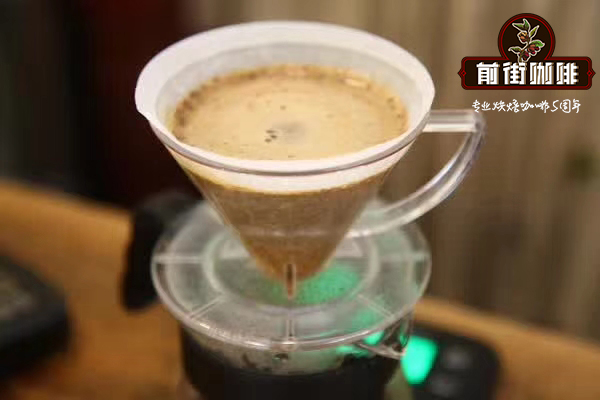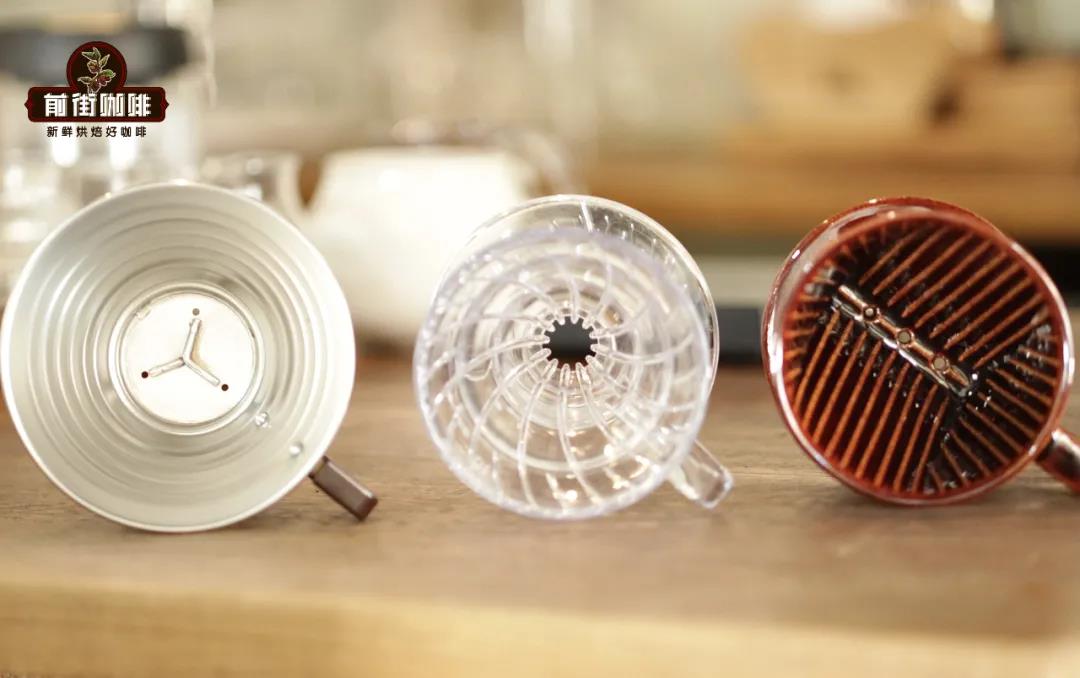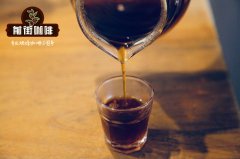The origin of hand filter cup the function of filter cup what is the effect of different filter cup on coffee extraction
、

The Origin of hand filter Cup
The world's first filter cup was invented by a wife named Mellita in Germany. Mellita was born in a small town in Germany in 1837 and loves coffee. One day in 1906, Mrs. Mellita suddenly felt that the coffee was not pure enough, so she drilled a hole under the cup and put her son's painting paper on it to see if she could drink purer coffee. This is the emergence of the world's first coffee filter cup. Later, the filter cup was gradually improved and officially put into production in Germany in 1912, and the patent was declared and obtained in 1937. Since then, hand-dripping coffee has become popular in Japan, South Korea, Taiwan and other parts of the world, and until now the third wave of boutique coffee has swept the world, leading to boutique coffee extraction.
The function of filter cup
(1) the main function of filter cup is to support, only flannel does not need "filter cup", metal filter itself is also a filter, so it does not need support.
(2) it is worth mentioning that the groove on the filter cup acts as a gap between the filter paper and the filter cup after water injection, thus affecting the flow of water and the extraction of coffee. With different brands, the structure of the design groove is also different.
Here we briefly mention what happened in the filter cup while making coffee by hand.
When we make coffee by hand, after the coffee powder touches the hot water, the carbon dioxide in the powder will be discharged out of the bean powder along with the soluble matter, and the gas will have a place to come out, and the groove will work. It forms a gap between the filter paper and the filter cup so that these gases can be discharged from the side.
It would be interesting without these grooves. When brewing, the filter paper will be close to the wall of the filter cup, and the gas cannot be discharged from the side. The surface of the powder becomes the only outlet of these gases, and the surface will bubble upward like magma. The disadvantage is that when the bubble breaks, the cold air will run in, resulting in uneven temperature of coffee extraction, affecting the quality of coffee. (sometimes, when cooking very fresh or deep-baked beans, it is inevitable to encounter the phenomenon that the exhaust volume is too large and the powder is broken upward.)
When the coffee powder is extracted by hot water, and when the volatile and soluble substances (that is, the coffee we want to drink) are released, the gas in the coffee powder will continue to be released, but because the hot water continues to enter, the powder will be broken up by water. So up to the surface are tiny bubbles. Through the right water temperature, water and time, the right coffee liquid will be extracted.
The hole of the filter cup
The opening at the bottom of the filter cup can control the flow rate of brewing coffee, which determines the time and mode of contact between water and coffee powder. The number and size of openings at the bottom of the filter cup vary according to different brand positioning, including single hole, double hole, three hole and multi-hole.
Single hole filter cup
The characteristic is that the flow rate is slow, the initial amount of coffee powder and the amount of water injected must be calculated, and the water injection must be completed at once, so the shallow baked beans which are easy to block the filter hole are not very suitable, and the single-hole cup is more suitable for beginners-simple, low cost and durable.
The single-hole filter cup is relatively common, the filter hole makes the air flow through easily, when using the filter paper dripping method to brew coffee, the filter paper will stick to the filter cup wall, if there is no groove, after injecting hot water, the air can only be discharged from the filter hole at the bottom of the cup, and the rest of the air will be discharged from the surface of the coffee powder in the steaming state, and the coffee powder surface will break a hole, and the cold air will enter, so that the coffee will not be fully steamed.
Note: (shallow baked beans are less steamed than deep baked beans, drum bags are small, because shallow baked beans are mostly high-quality high-altitude producing areas, the baked beans are shallow, and the internal tissue structure of the beans is relatively tight, resulting in poor water absorption of coffee powder during hand flushing, and more fine powder after grinding.
The performance is as follows: when steaming, the hamburger is not obvious or not as fast as the hamburger ~ while the water of the single hole itself is slow, coupled with more shallow baking fine powder, it is easy to cause blockage and eventually lead to excessive extraction rate.
Solutions (the following methods should be used comprehensively):
(1) when steaming, there should be less water than usual, otherwise you will find that the water above will flow down very quickly. At this time, it is no longer steaming, it has already begun to extract.
(2) the water temperature should be about 92 degrees higher.
(3) it can be ground thicker than usual.
(4) because the powder is launched quickly and the filter cup is slow, it is best to use a small flow and multi-stage water injection to match the beans and the filter cup.
two。 Macroporous filter cup
As the name implies, it is single and big. It is characterized by fast flow rate, so its popularity is relatively high. The disadvantage is that because the flow rate is too fast, it is easy to cause insufficient extraction, so the requirement of water injection speed is relatively high.
3. Three-hole filter cup
It is suitable for coffee of all roasting degrees.
In addition, there are double-hole, four-hole and six-hole filter cups, which are similar to Karita's three-hole cups and are suitable for all degrees of coffee. However, the more the number of holes, the higher the requirements for water injection skills, which requires the accumulation of certain experience.
Basically want to have a very stable brewing quality, it is recommended to choose a slower flow rate of the filter, because the slow flow rate, you can have more time to add water. At the beginning, it is recommended to choose 1 to 3 small holes, easy to use, experts, please feel free. A large hole is not recommended for beginners, and it is very difficult to get started.
Important Notice :
前街咖啡 FrontStreet Coffee has moved to new addredd:
FrontStreet Coffee Address: 315,Donghua East Road,GuangZhou
Tel:020 38364473
- Prev

Recommendation and usage of coffee filter cup for beginners characteristics of brewing coffee with V60 filter cup
Several common filter cups 1. Melitta (Melita Cup) single-hole filter cup recommendation hand filter cup cannot but start with this one. It was invented and patented by Mrs. Merita in Germany in 1908, which is regarded as the ancestor and the most classic. Features: slow flow rate, suitable for medium and deep roasted coffee, light roasted coffee is easy to plug the filter hole and need to be brewed in advance when using Melita cup.
- Next

How to brew a good cup of coffee quickly and easily how to use a smart cup
Professional coffee knowledge exchange more coffee bean information Please pay attention to the coffee workshop (Wechat official account cafe_style) there are many kinds of coffee brewing utensils, such as hand brewing pot, MOKA pot, French filter pot, siphon pot and so on. Through soaking, infiltration, pressure or dripping filtration, the coffee produced is different in taste and flavor, and it needs to be brewed or brewed well, among which there is a lot of knowledge.
Related
- What is the Philharmonic pressure? How to use Philharmonic pressure to make delicious coffee
- Why does a hand grinder have more fine powder than an electric grinder?
- In addition to the hot mom, what is the difference between the versions of EK43 | ditting and Mahdi ek43?
- What kind of equipment do you need to make coffee by hand? Introduction to novice starter cooking equipment tools
- Espresso needs to be ground how thick and thin scale entry Italian Coffee Machine Bean Grinder investigation and Grinding course
- How much does it cost to open a small private cafe? How much does it cost to learn coffee? How to operate it?
- The difference between the flavor characteristics of hand-brewed coffee and coffee maker is hand-brewed coffee really better than coffee maker? Can I use a coffee machine to make coffee beans by hand?
- The difference between 01 and 02 of hario v60 filter cup what is the difference between 01 and 02 filter cup opening and cooking flavor
- What's the difference between the smart cup and the French kettle? Which is better, the French kettle or the Smart Cup?
- What's the difference between a smart cup and a V60 filter cup? The difference between the taste of smart cup and hand-brewed coffee

